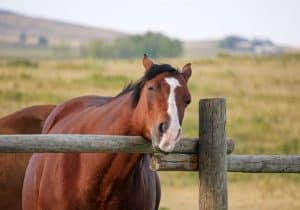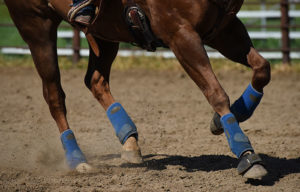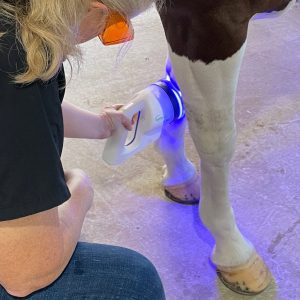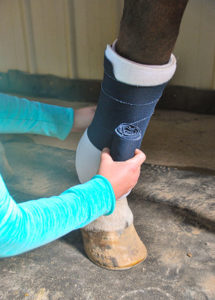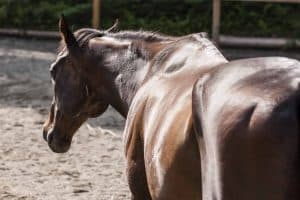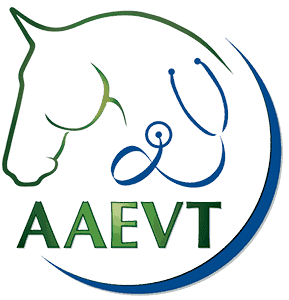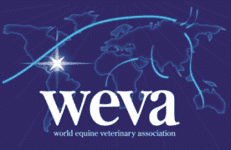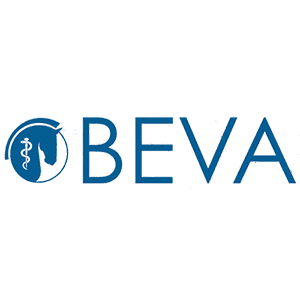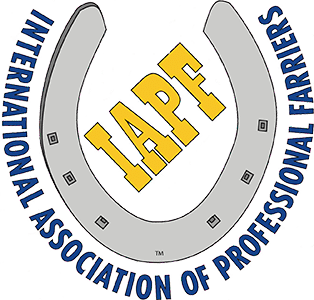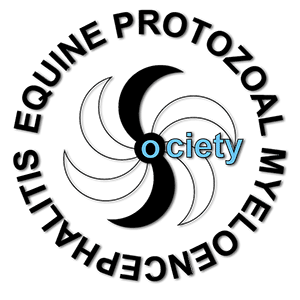Using Autologous Blood Products to Manage Arthritis in Horses
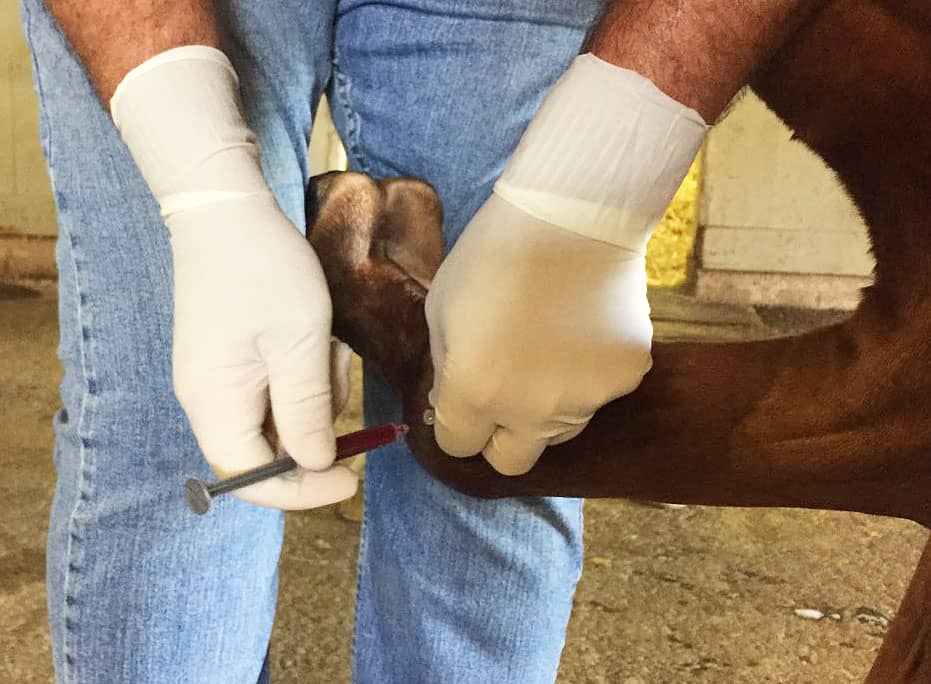
Equine regenerative medicine has come a long way since the mid-’90s, when researchers first began collecting blood from individual horses, adapting it to enhance the effects of different components, and injecting it back into the original horses to facilitate healing. Over that time practitioners have developed a variety of treatment approaches and begun building a body of research on each treatment’s components and how they might support different types of bone or soft tissue injuries in horses.
Gustavo M. Zanotto, DVM, PhD, Dipl. ACVSMR, clinical associate professor of equine sports medicine at Texas A&M University’s School of Veterinary Medicine and Biomedical Sciences, in College Station, recently summarized autologous—those originating from the patient—products during a Sunrise Session sponsored by Dechra at the 2022 American Association of Equine Practitioners Convention, held Nov. 18-22, in San Antonio, Texas.
What Are Regenerative Therapies in Horses?
A horse’s healing response involves both repair and regeneration. Repair is associated with scar tissue formation, whereas regeneration is the deposition of new tissue that has similar biomechanical function to the original, uninjured tissue.
“When you talk about regenerative medicine or regenerative therapy, the whole goal of that therapy is trying to modify the microenvironment in the tissue to facilitate regrowth in a more originative status than the reparative phase,” Zanotto said. “(We’re also) focused on trying to limit the scar tissue formation so we can achieve a better biomechanical and better functional tissue in the end.”
Scroll down to the bottom of this article, or click here to watch the presentation in full.
This involves stimulating tissue synthesis with bioactive signaling proteins called cytokines, he explained, while blocking cytokines that cause tissue degradation over time. At its simplest, the goal is to block inflammation during the healing process to allow the tissue to heal in a better way.
Zanotto described two proteins present in regenerative medicine treatments broadly:
Interleukin-1 receptor antagonist protein (IRAP) is one of the most important, he said, especially in the context of joints, because it modulates inflammation associated with cartilage breakdown and bone resorption. Essentially, it blocks the harmful cytokine interleukin-1’s destructive effect.
Growth factors are signaling proteins in platelets that stimulate cell growth, cell differentiation, cell survival, inflammation resolution, and tissue repair.
FDA Regulations (Definitions and Safety Considerations)
Zanotto explained that FDA classifies the systems used to create biologics as devices, “but the final product is classified as a drug, and my understanding from that … is that we do not have FDA-approved biological products to be used either in veterinary medicine or in humans.”
For this reason—nobody is policing the quality or safety of individual biologics—it’s important to understand the two FDA classifications for regenerative treatments: minimally manipulated products and those that undergo more manipulation. The minimally manipulated products tend to be less regulated than the other group, he explained.
“What is considered minimally manipulated for FDA right now is basically autologous products that pass through only centrifugation or physical process,” he said, “but don’t have culture expansion or addition of enzymes or any other protein to the product.”
Autologous Blood Products for Horses
Biologic therapies consist of three main categories: blood-derived (from serum or plasma), bone marrow concentrate, and stem cells.
“When you talk about the blood-derived products … the most common product that we are using in that category is the IRAP product or the autologous conditioned serum (ACS),” he explained. “On the other side, we have the plasma products … the platelet rich plasma (PRP), the autologous protein solution (APS), and alpha-2 macroglobulin (A2M) products.”
Orthobiologic Therapies in Horses: Longer Acting Than Other Treatments?
Overall, equine veterinarians are much more aware of orthobiologic treatment options now than a decade ago (Zanotto and Frisbie, 2022). It behooves them to examine their joint therapy approaches, however, and consider whether orthobiologics would work better than what they’re currently using, said Zanotto.
Ninety percent of the veterinarians surveyed in the awareness study reported they had used intra-articular (IA, within the joint) biologic therapies and, on average, ranked the benefit as 4 on a scale of 1 to 5. The top reason they reported for using these therapies over IA corticosteroids, based on clinical impressions, was long-term efficacy.
“That’s interesting because we don’t have that data yet,” said Zanotto. “We don’t even know if biologic therapy has a long-term benefit compared to corticosteroids in the (equine) joint,” though it’s available in humans.
For example, PRP offers a much longer benefit in the human knee joint than corticosteroids, he explained: “If you follow up over time, we start to see that PRP seems to be superior to corticosteroids, especially when it starts to pass that three-month” point. (McLarnon, 2021)
Zanotto then reviewed the types of autologous therapies and research supporting them.
How Autologous Conditioned Serum Works in Horses
This treatment, which has been on the market the longest, involves collecting blood and incubating it with borosilicate glass beads. The biophysical properties of the surface of these beads stimulate the white blood cells to release anti-inflammatory cytokines—the most important of which are interleukin-1 receptor antagonist (IL-1Ra) and interleukin-10.
“It’s also important to understand that anytime we have a clot, the growth factors present on the platelets will be released in the serum,” he said, “so it is not surprising that we do see growth factors present with the IRAP product.”
Researchers have shown that ACS improved lameness in the carpal chip research model and increased IRAP expression in the joint—“just by injecting the autologous conditioned serum, it seems to stimulate the body to produce more IRAP,” says Zanotto—which, timingwise, seems to correlate with improvement in lameness (Frisbie et al., 2007). They also saw improvement in cartilage and synovial membrane (joint lining) histology, though the findings weren’t statistically significant.
“Basically, what the authors conclude from this study is that autologous conditioned serum has what they call symptom-modifying OA effects, meaning (it improves joint) function and the lameness in horses with osteoarthritis,” he said. “But it also has disease-modifying OA effects, meaning these products are able to modulate the response of the joint and slow the cartilage breakdown.”
As for soft tissue treatment, ACS has been shown to improve healing in naturally occurring tendon injuries, (Geburek, 2015).
Zanotto summarized a systematic review of experimental and observational studies of ACS in humans and horses, explaining they “have shown improvement in the parameters that they evaluate; however, when they looked at studies in vitro (in the lab, not in the live joint) that finding seems to be less constant, meaning in vitro was not able to replicate the same findings seen clinically,” something he said might be attributable to the length of in vivo studies versus in vitro ones and, simply, the difficulty of replicating in vivo findings in a lab model.
How Platelet-Rich Plasma Works in Horses
Platelet-rich plasma products contain more than 1.5 times the concentration of platelets in blood and can be classified based on:
- the number of platelets concentrated;
- the number of white blood cells available (leukocyte-rich or -poor PRP); and
- how the platelets are activated.
Processing them involves collecting blood, combining it with an anticoagulant, and injecting the sample into a device that separates and concentrates cells—whether it’s a single-, double-, or vertical centrifugation system or a filtration system.
Zanotto compared the different methods of centrifugation and the effects of distance, sheer forces, and processing time on cell damage.
“More recently, we have this device that uses vertical centrifugation, which … basically creates almost a vortex inside,” he said. “The distance that the cells need to travel is much shorter (than single centrifugation), so you are able to process that PRP in a shorter period of time and you have less risk of damaging the cells,” because they are subject to fewer sheer forces and, therefore, likely to be activated prematurely. Ideally, you want these to be activated at the time of injection back into the horse.
Dr. Gustavo Zanotto
“Usually, I’m getting about 5 to 6 mLs of this PRP product every time I process on this device,” he said. In unpublished data gleaned during a quality control study of this product in 12 horses, he and his colleagues found white blood cells were concentrated about 6.5 times baseline in the final product for each horse, platelets at five times baseline, and red blood cells decreased by about half.
Zanotto said there’s a lot of discussion in the veterinary community around the concentration of white blood cells in PRP, but there’s no consensus yet on which is better, leukocyte-rich or -poor. “I don’t think there is one product that is going to be better for every condition, ” he said. “I think there are conditions where leukocyte-poor plasma or leukocyte-rich PRP are better.”
‘Regenerative Inflammation’ and PRP?
Potentially, neutrophils in PRP might facilitate a process known as regenerative inflammation. These specialized white blood cells interact with platelets, he explained, causing increased release of potent anti-inflammatory proteins called lipoxins, which play a critical role in healing’s resolution phase. Additionally, neutrophils secrete cytokines that assist macrophages—white blood cells that engulf and kill harmful microorganisms, which makes them important in promoting and initiating healing.
“Same thing, if you have more mononuclear cells—monocytes (and lymphocytes)—you may have a way to manipulate these cells … more toward the anti-inflammatory stage of macrophages that might be important to inflammation resolution,” he said.
Zanotto described a study in humans (Parrish et al., 2016) in which researchers compared leukocyte-rich (made with the vertical centrifugation system) to leukocyte-poor PRP (single centrifugation): “First they found that the growth factors on the leukocyte-rich product are much higher than the leukocyte-poor product, and it’s not surprising because on this device specifically … there is a higher number of platelets on the leukocyte-rich devices compared to the leukocyte-poor device.”
The scientists also saw more stimulation of the tendon cells using the leukocyte-rich product, he said.
Researchers on equine studies have found:
- Artificially induced tendon core lesions treated with PRP had more biochemical components, including collagen, glycosaminoglycan, and cellular production and healed with better biomechanical properties (Bosch et al., 2010).
- In a small study (n=20), horses with naturally occurring superficial digital flexor tendinopathies became significantly sounder earlier than placebo horses, their tendons healed with improved tissue organization, and more had returned to their previous performance level at 12 and 24 months (Geburek et al., 2016).
- Yearling Thoroughbreds with suspensory ligament branch desmitis treated with platelet- and leukocyte-rich plasma in a randomized clinical trial were more likely to start racing in the short term, though there wasn’t a statistically significant difference in the earnings among the groups over time (Garrett et al., 2013).
- Horses with chronic OA and horses with acute OA had a similar return to performance to controls after intra-articular PRP therapy, but treated horses experienced much less recurrence of OA over the study period (Abellanet and Prades, 2009). Chronicity and radiographic changes had negative predictive values.
How Autologous Protein Solution (APS) Works in Horses
As for the components of autologous protein solution (APS, another plasma product), Zanotto referenced a randomized clinical trial in which researchers (Bertone AL et al., 2014) found that white blood cell levels in APS were about 12 times baseline and platelet numbers were 1.6 times baseline. Horses with OA received intra-articular APS or a placebo on Day 0, with assessments beginning at Day 14.
“APS did improve lameness, but it has only been evaluated up to 14 days,” he said, explaining that control groups didn’t extend past those two weeks.
Researchers have conducted studies comparing blood-derived products to traditional OA treatments and saw an anti-inflammatory effect after post-arthroscopic-surgery IRAP injection. In horses treated with IRAP and those treated with PRP they noticed an increase in chondroitin sulfate, revealing a possible anabolic response of the cartilage on the healing process after surgery (Machado et al., 2018).
“Basically, … every blood-derived product has its own type of combination of growth factors and inflammatory proteins,” he said. Because practitioners don’t know what the best combination of these proteins is, he said, it’s difficult to draw conclusions.
How Alpha-2 Macroglobulin Products Work in Horses
Finally, Zanotto described A2M as a large, naturally occurring protein present in plasma, which he explained is produced by depleting other cellular components in a sample. The product offers about 20% more macroglobulin than baseline. It involves a blood draw with an anticoagulant, centrifugation, injection of the platelet-poor plasma into a concentration kit, then administration of the concentrated A2M plasma product.
“We don’t understand exactly how this protein works, but one of the claims that this protein would be entrapping the metalloproteinases (that break down joint tissues like articular cartilage) in the joint, preventing the degradation of the cartilage,” he said.
Manufacturers recommend avoiding treatment with sedation or non-steroidal anti-inflammatories ahead of performing the procedure, because it can affect the A2M.
Zanotto described an A2M study completed in a laboratory model, though the product used was not a horse-specific product: “In this model it seems like the alpha-2 macroglobulin has some disease-modifying effect in the joint in this mouse model.”
Take-Home Message
Every time equine veterinarians use regenerative medicine, they aim to modulate the healing response, said Zanotto, and they must remember that not every patient, whether being treated for a joint injury or a soft tissue injury, acute or chronic, heals the same way or at a similar rate. Veterinarians likely need to use different biological products in a multimodal way in their equine patients.
“I don’t see that one single biological product will be able to be used for all clinical presentations,” he said. “It’s important to keep the FDA regulations in mind, so I would probably recommend you keep with at least the minimally manipulated biological products. I think if you start to use the more manipulated, you might be running some risks.”
Zanotto wrapped up his presentation by emphasizing veterinarians are dealing with two variables they cannot control when using autologous blood therapies: individual variance in horses and products derived from those individuals. This is “going to affect the variance (in response) you’re going to have,” he said.
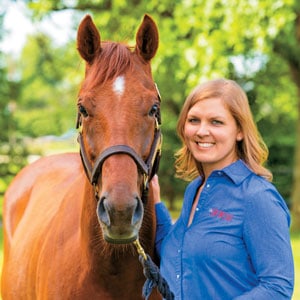
Written by:
Stephanie L. Church, Editorial Director
Related Articles
Stay on top of the most recent Horse Health news with

